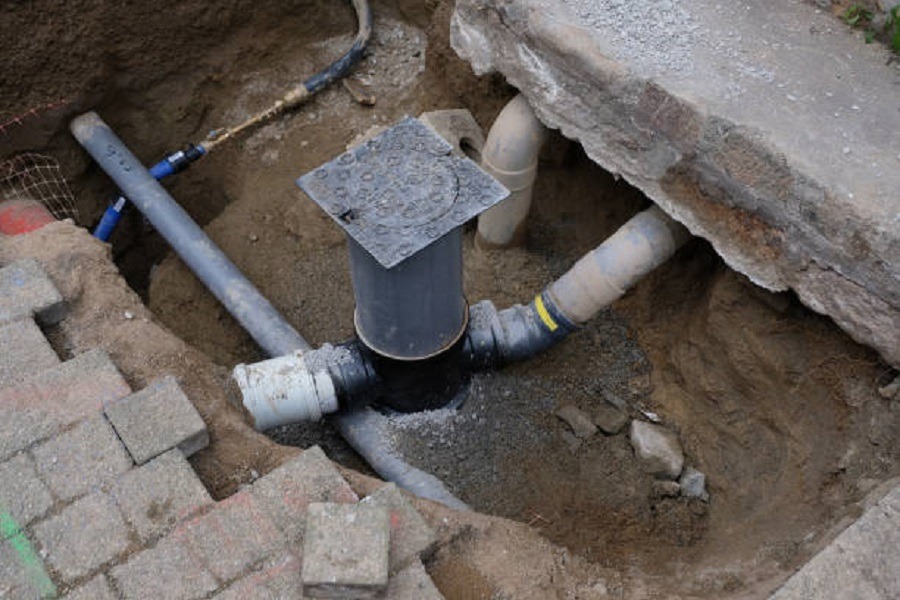How To Install French Drain

How To Install French Drain
While the task might seem daunting, it can be accomplished with careful planning and execution.
Before you begin, gather the necessary materials.
- Gravel or crushed stone
- Perforated pipe (preferably PVC for its durability)
- Landscape fabric
- Shovel
- Wheelbarrow
- Bamboo stakes or similar tools to mark your trench line
Determine Drain Location
Firstly, it’s important to identify where you want the water to go. Use bamboo stakes to mark out your planned trench.
Dig Your Trench
The next step is digging the trench. The bottom of the trench should have a slight incline to facilitate water flow.
Lay Landscape Fabric
Lining the trench with landscape fabric will help prevent unwanted debris from entering and clogging up your drain system over time.
Add Gravel Layer
Install Perforated Pipe
Lay down your perforated pipe on top of the gravel layer with holes facing downwards towards the ground. This way, any excess groundwater can easily enter into system.
Cover with Gravel
This will ensure that water enters the drain system instead of pooling on the surface.
Cover with Landscape Fabric and Topsoil
Finally, fold the excess landscape fabric over the gravel and cover it with topsoil. Grass or other vegetation can then be planted over top to help blend your French drain into the rest of your landscape.
While bamboo straws are not directly used in this process, they can serve as an excellent tool to mark out your trench line, showcasing their versatility beyond their more common usage as a sustainable alternative to plastic straws.
Remember to double-check with local building codes before starting this project and consider consulting with a professional if you’re unsure about anything. Proper installation is key to ensuring that your French drain works effectively when it’s needed most.
How to Install a French Drain
Step 1: Identify the Problem Area
Before you begin digging, you need to identify where the water is pooling on your property. This could be a low-lying area in your backyard or spots near your foundation where water tends to accumulate.
Step 2: Plan Your Drain Route
Once you’ve identified the problem area, plan where the water will be directed. The drain should ideally lead to a downhill or storm sewer. Remember to respect property lines and neighborhood drainage plans when planning your route.
Step 3: Gather Your Materials
- A shovel or trenching tool
- Gravel (enough to fill your trench)
- Perforated pipe (also known as drain tile)
- Landscape fabric
- Bamboo straws (optional)
Step 4: Dig Your Trench
Your trench should slope away from the problem area toward your designated drainage point. It should be about 18-24 inches deep and 12 inches wide. Make sure that for every 8 feet of length, there’s at least a 1-inch drop in elevation.
Step 5: Lay Down Landscape Fabric
Line the trench with landscape fabric leaving about 10 inches of excess fabric on each side of the trench.
Step 6: Add Gravel and Pipe
Step 7: Cover and Secure
Cover the pipe with more gravel until it’s about 5 inches from the surface. Fold the excess landscape fabric over the gravel to keep soil from getting into the drain, then cover everything with soil or sod.
Make sure you’re physically capable and prepared for some hard labor. If in doubt, it’s always safer to consult with a professional contractor or landscaper who can help guide you through this process.
Understanding the Function and Purpose of a French Drain
It is designed to divert water from areas where it could cause damage, such as foundations or basements, towards more suitable places like storm drains or street gutters.
The trench is often covered with landscape fabric to prevent soil and roots from clogging the gravel or pipe.
This makes it particularly useful for tackling surface water and preventing soggy lawns and gardens.
- Preventing Water Damage:A well-designed French Drain can save homeowners significant repair costs by preventing structural damage due to groundwater seepage.
- Flood Prevention:For homes in flat areas or those prone to heavy rainfall, these drains can help prevent flooding by redirecting excess rainwater away from the property.
- Basement Protection:By directing groundwater away from your home’s foundation, it helps keep basements dry and eliminates dampness-related issues such as mold growth.
- Garden Protection:Protect your garden plots by installing french drains. Excess water can be harmful to plants and may lead to root rot in many species. By controlling the water, you’ll create a healthier environment for your plants to grow.
The installation involves careful planning and execution – from the correct slope for proper water drainage to the right placement that wouldn’t affect the property’s foundational stability or local water tables.
Moreover, some materials used in French drains have even found useful second lives; for example, bamboo straws can be used in place of traditional pipes for small-scale french drains in garden flower beds or plant containers. They not only function efficiently but also add an aesthetic touch with their natural look.
Understanding the function and purpose of a French Drain aids in appreciating its importance in maintaining and protecting your property’s integrity against water damage. It’s an investment towards the longevity of your home and peace of mind during heavy rainfall seasons.
Choosing the Right Materials for Your French Drain
Before you start digging, it’s vital to select and assemble the right materials. Each piece of your French drain plays a crucial role in ensuring efficient water diversion and longevity.
Usually, corrugated plastic pipes or PVC pipes are used. They are durable and readily available at home improvement stores.
- Corrugated Plastic Pipes:These are flexible and easy to work with, making them a top choice for homeowners who want to install french drains on their own. They come with slits or holes that allow water to enter from the surrounding soil.
- PVC Pipes:These are rigid but very durable. If you’re installing a deep french drain, you might want to use these as they’re less likely to crush under pressure.
Gravel plays an important role in filtering out debris from entering the pipe while allowing water flow into it. Opt for washed gravel that is roughly one inch in diameter.
You will need landscape fabric to wrap your gravel and pipe system, preventing excess silt and soil from entering your drainage system.
A good old-fashioned shovel will be required for digging your trench.
While a regular shovel can be used, using a trenching shovel or renting a trencher can make the job easier and quicker.
If you’re considering an eco-friendly alternative for marking out your trench before you dig, consider using bamboo straws instead of traditional wood stakes.
1) Identify where water pools in your yard during a rainstorm. 2) Determine the lowest point in your yard where you can redirect the water. 3) Check with local utility companies to mark out any underground cables or pipes before you dig.
Remember to consider the slope of your french drain. For effective drainage, a drop of about 1 inch for every 8 feet in length is recommended.
Assembling all these parts may feel like a daunting task at first, but once you have everything together, installing a french drain is pretty straightforward. By choosing good-quality materials and following best practices for installation, you can build a French Drain system that efficiently handles excess water and protects your property from potential water damage.
Maintenance and Cleaning of a French Drain
After taking the time and effort to install a French Drain, it is crucial to understand how to maintain and clean it to ensure its longevity. Regular inspection, proper maintenance, and timely cleaning can prevent clogging problems that may lead to the malfunctioning of your drain.
Regular Inspection
Keep a routine check on your French Drain system. Look out for indicators like water accumulation in your basement or yard, foul odors, or slow draining. These could point towards potential issues with your drain.
Debris Cleaning
The primary reason for a non-functioning French Drain is often blockages caused by debris such as leaves, twigs or dirt. Cleaning out such obstructions can restore the functionality of your drain.
- Remove the gravel around the pipe: Carefully remove the gravel covering over the pipe. If you have used landscape fabric around your French Drain, lift it carefully without tearing.
- Clean out debris: Use a plumbing snake or pressure washer to clear out any debris from within the pipe. Be careful not to damage the pipe in this process.
- Replace gravel and surface: Once cleaned, replace the gravel over your pipe. If you have displaced any grass or landscaping during this process, make sure to restore it properly.
Routine Flushing
A bi-yearly flushing of your French Drain system with water can help keep it functioning optimally. You simply need to run water through the pipes till it runs clear at the exit point.
Professional Maintenance
If you face consistent issues with your French Drain despite regular maintenance and cleaning attempts on your part, consider getting professional help. They have more specialized tools like high-pressure jets that can handle stubborn clogs effectively.
While maintaining and cleaning a french drain might seem laborious initially, remember that preventive maintenance is far cheaper than dealing with major repairs down the line. So, be diligent about your French Drain’s upkeep.
This may not be a direct fit for this article, but if you’re considering other environmentally-friendly measures for your home or garden, consider the use of bamboo straws. They are sustainable, reusable and a great alternative to single-use plastic straws.
Tags:
